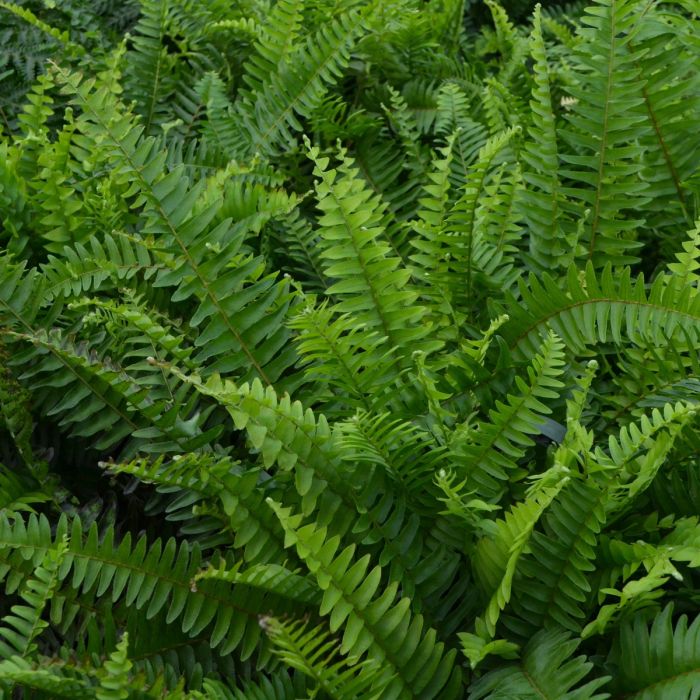Top Ten Pet Friendly Houseplants
A List of our Top Ten Pet Friendly Houseplants!

Elegant, finely-toothed, sword-shaped fronds that are bright green; a spectacular groundcover for a woodland area; great in hanging baskets or containers, for indoors or out
When you see the Gerten Grown logo on our annuals, you know you're getting a fresh plant directly from our greenhouse. We've been perfecting our growing process for over four generations and pride ourselves on providing local quality and freshness to our customers. Better pricing on better quality plant material, that's Gerten Grown.
Height: 24 inches
Spacing: 18 inches
Sunlight: ![]()
![]()
![]() or Bright Indirect
or Bright Indirect
Hardiness Zone: 9a
Other Names: Sword Fern, Tuber Ladder Fern, Fishbone Fern
Description:
Elegant, finely-toothed, sword-shaped fronds that are bright green; a spectacular groundcover for a woodland area; great in hanging baskets or containers, for indoors or out
Features & Attributes
Boston Fern's attractive glossy ferny pinnately compound leaves remain forest green in color with hints of light green throughout the year. The flowers are not ornamentally significant.
This is a dense herbaceous evergreen houseplant with a shapely form and gracefully arching foliage. Its relatively fine texture sets it apart from other indoor plants with less refined foliage. This plant should not require much pruning, except when necessary to keep it looking its best.
Planting & Growing
When grown indoors, Boston Fern can be expected to grow to be about 24 inches tall at maturity, with a spread of 24 inches. It grows at a fast rate, and under ideal conditions can be expected to live for approximately 20 years. This houseplant performs well in both bright or indirect sunlight and strong artificial light, and can therefore be situated in almost any well-lit room or location. It does best in average to evenly moist soil, but will not tolerate standing water. The surface of the soil shouldn't be allowed to dry out completely, and so you should expect to water this plant once and possibly even twice each week. Be aware that your particular watering schedule may vary depending on its location in the room, the pot size, plant size and other conditions; if in doubt, ask one of our experts in the store for advice. It is not particular as to soil pH, but grows best in rich soil. Contact the store for specific recommendations on pre-mixed potting soil for this plant.
There are many factors that will affect the ultimate height, spread and overall performance of a plant when grown indoors; among them, the size of the pot it's growing in, the amount of light it receives, watering frequency, the pruning regimen and repotting schedule. Use the information described here as a guideline only; individual performance can and will vary. Please contact the store to speak with one of our experts if you are interested in further details concerning recommendations on pot size, watering, pruning, repotting, etc.
-- THIS IS A HOUSEPLANT AND IS NOT MEANT TO SURVIVE THE WINTER OUTDOORS IN OUR CLIMATE --
| Common Family Name | Fern |
|---|---|
| Plant Life Cycle | Annual |